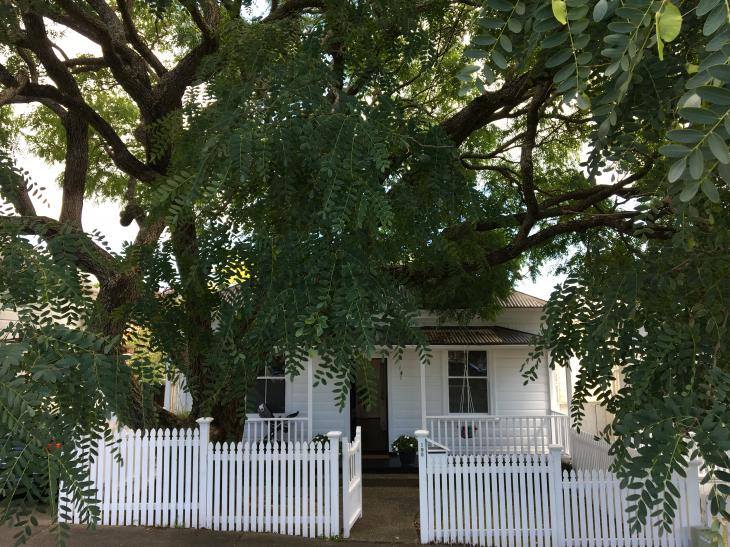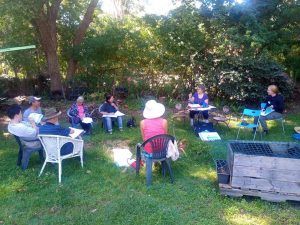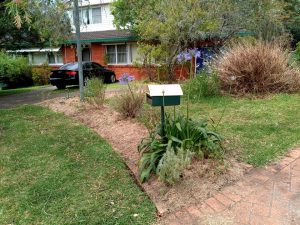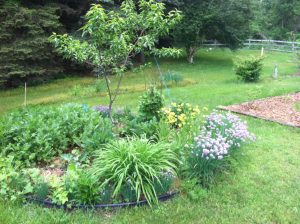Our April permablitz had the usual list of jobs (build new raised garden beds, plant fruit trees, prune, etc) but what this particular blitz highlighted for me was the all too common mistake of planting the wrong plant in the wrong position without any thought regarding their mature size. Large trees had been put in the ground close to fences and the driveway, citrus trees were planted in a narrow area and were obstructing the access to the sheds, a fig was close to the house, and large leafy monsters shaded out all the northern light.
In this instance several trees needed to be coppiced or removed completely, a young mango tree had to be relocated further away from the fence, and 2 citrus trees needed to be heavily pruned to train them to fit into the narrow space between the fence and walkway. It is always easier and cheaper to remedy such issues early, before the plants become huge and block drains, lift paving or damage fences and foundations.
But how do we plan these things BEFORE the plants go in the ground so that we are not creating a lot of work for ourselves further down the track? We don’t want to waste time and money dealing with a plant that is not suitable to the location it has been planted in. Here are a few simple tips:
# 1 Climatic needs
Find the plants that do well in your area and stick to these for the majority of your plantings. You can, however, also stretch to plants that prefer conditions outside of your local climate by creating microclimates in your garden.
# 2 Mature plant size
Consider the mature height and width of your plants (especially for trees and shrubs). Sometimes it is hard to imagine how your little sapling will look once full grown and this is when we often place things inappropriately. With the mature size in mind ask yourself questions such as: Is it suitably positioned? Will it cast too much shade where you don’t want it? Is it too close to structures or other plants? Will it obstruct walkways or block windows?
# 3 Shade/sun needs
Don’t try to place shade loving plants in full sun or sun loving plants in the shade. This step actually isn’t as cut and dry as one might think. I suggest that you need to use a little judgement. Our hot Australian conditions mean that plants recommended for full sun can actually quite happily survive with a little shade (and indeed may suffer if placed in full sun here). Also think about how the sun access may change over the years. Is there another plant nearby that has not yet reached maturity which will turn an area which is sunny today into a shady area in a few years time?
# 4 Water needs
Identify the wet and the dry spots in your yard and choose plants accordingly. Drought hardy plants positioned in wet areas of the garden can succumb to root disease and pest problems. Water loving plants will need constant supplementary watering if planted in a dry location.
# 5 Soil conditions
Study your soil. Is it sandy or heavy clay? What is the pH? Find that plants which are suited to those conditions.
One final word. DO NOT buy a plant on a whim just because it looks pretty only to go home and think “Now where can I plant this?”. That is the wrong way around! Instead, study the spot where you want to put a plant. Think about the sun and the soil type in that location. Think about the height and the width of the plant you want to fill that spot. Evergreen? Deciduous? Flowering season? Or anything else that matters to you. If planting several plants there, how will one affect the other? Will one of the plants create shade for the other plants? Do they have the same needs in respect to moisture, fertiliser, etc. Then find the plant which fills all of your criteria.
Now run outside and create your oasis!
Jo







